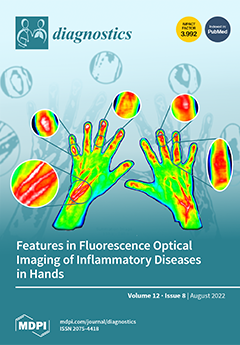We aimed to evaluate and compare the diagnostic performances of ultrasonography (US) and magnetic resonance enterography (MRE) in assessing active bowel lesions in patients with Crohn’s disease (CD). Materials and Methods: We searched PubMed and EMBASE for studies in which US and MRE were used to assess active bowel lesions in CD patients. Bivariate random effect meta-analytic methods were used to estimate pooled sensitivity, specificity, and hierarchical summary receiver operating characteristic (HSROC) curves. We performed a meta-regression analysis to explore the source of study heterogeneity. Results: Eleven studies involving 752 patients were included. US exhibited a pooled sensitivity of 86% (95% confidence interval (CI) 72–94), pooled specificity of 88% (95% CI 78–94), and HSROC of 0.93 in 10 studies. MRE exhibited a pooled sensitivity of 88% (95% CI 76–95), pooled specificity of 87% (95% CI 73–95), and an HSROC of 0.94 in eight studies. In seven studies comparing the diagnostic performances of US and MRE, the summary sensitivity of US and MRE were 86% (95% CI 65–96, I
2 = 92.1) and 86% (95% CI 72–93, I
2 = 88.1) (
p = 0.841), respectively. The summary specificity of US and MRE were 87% (95% CI 78–93, I
2 = 79.8%) and 84% (72–90, I
2 = 72.5%) (
p = 0.431), respectively, which showed no statistical differences. On meta-regression analysis, studies from Europe (
p = 0.002), those that used linear US probes (
p = 0.012), those on small bowel lesions (
p = 0.01), and those with outcomes as combined features (active inflammation) reported higher US sensitivity than those from other regions, those that used both linear and convex US probes, those on small and large bowels, and those with outcome as one feature (bowel wall thickening or ulcer). Studies with pediatric patients (
p = 0.001), those with reference standards including US (
p = 0.001), and outcomes as combined features (
p = 0.01) reported higher MRE specificity than those with adult populations, reference standards other than the US, and outcomes as one feature. Conclusions: In spite of considerable heterogeneity in the included studies, both US and MRE can diagnose active bowel lesions with comparable diagnostic accuracy in patients with CD. The study region, type of US probe, lesion location, investigated outcome for US sensitivity and study population, reference standards, and investigated outcomes for MRE specificity were potential sources of heterogeneity.
Full article






